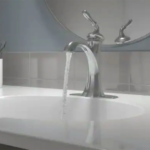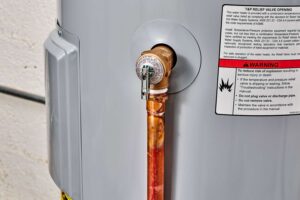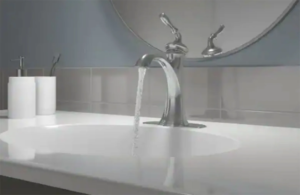A toilet bowl that isn’t filling properly can be frustrating and inconvenient. Common issues include a faulty fill valve, a clogged fill tube, a partially closed water supply valve, or a sticking float. At Masterflo Plumbing, we are experts in diagnosing and fixing these problems to ensure your toilet functions smoothly. Listen for hissing sounds after flushing, clear any blockages in the fill tube, ensure the water supply valve is fully open, and check the float and flapper seal for any issues.
Key Takeaways
- Faulty fill valve may cause low water levels or slow filling tanks.
- Clogged fill tube can hinder proper water flow into the bowl.
- Water supply issues like closed valves or blockages can disrupt filling.
- Malfunctioning float or waterlogged float may impede filling.
- Flapper seal problems, like wear or damage, can lead to water leaks.
Faulty Fill Valve
If your toilet bowl isn’t filling properly, a common culprit could be a faulty fill valve. The fill valve is responsible for regulating the water flow into the toilet tank, allowing it to refill after each flush. When the fill valve is faulty, it can result in issues such as low water levels or slow filling tanks.
To determine if the fill valve is the problem, you can conduct a simple test. First, flush the toilet and observe the water flow into the tank. If the flow seems weak or the tank is slow to fill up, there may be an issue with the fill valve. Additionally, you can listen for any hissing or whistling sounds coming from the toilet after it’s been flushed, as this can also indicate a faulty fill valve.
Replacing a faulty fill valve is a relatively straightforward task that can often address the problem of a toilet bowl not filling properly. By addressing this issue promptly, you can guarantee your toilet functions efficiently and effectively.
Clogged Fill Tube
When troubleshooting why your toilet bowl isn’t filling properly, another potential issue to ponder is a clogged fill tube. The fill tube is a small, flexible tube that directs water into the toilet bowl after the flush. If this tube is clogged with mineral deposits, debris, or other blockages, it can hinder the proper filling of the bowl.
To check if the fill tube is clogged, first, turn off the water supply to the toilet. Disconnect the tube from the toilet tank and the water supply valve. Inspect the tube for any visible blockages or buildup. You can use a small brush or pipe cleaner to gently remove any obstructions.
After cleaning the fill tube, reattach it securely to the tank and the water supply valve. Turn the water back on and flush the toilet to see if the issue has been resolved. If the bowl still isn’t filling properly, consider looking into other potential causes such as water supply issues.
Water Supply Issues
Examine the water supply for any potential issues that could be affecting the proper filling of your toilet bowl. First, confirm that the water valve supplying the toilet is fully open. Sometimes, the valve may be partially closed, restricting the flow of water into the tank. Next, check for any kinks or blockages in the water supply line. A twisted or obstructed water line can impede the flow of water, leading to inadequate filling of the toilet bowl.
Additionally, inspect the water inlet valve for any signs of damage or malfunction. The inlet valve controls the entry of water into the tank and can be a common source of water supply issues. If the valve is faulty, it may not be allowing sufficient water to fill the tank properly.
Lastly, make sure there are no issues with the overall water pressure in your home. Low water pressure can impact the filling of the toilet bowl. If you suspect low water pressure, you may need to consult a plumber to address the underlying cause and ensure proper filling of your toilet bowl.
Malfunctioning Float
Examine the toilet bowl’s float for any signs of malfunction that could be affecting its proper operation. A malfunctioning float can lead to issues with the water level in your toilet bowl, causing it not to fill up correctly. Here are three common problems to look out for:
- Sticking Float: Check if the float is sticking in one position, preventing it from moving smoothly up and down with the water level. This can result in the float not rising or falling as needed to regulate the water flow.
- Waterlogged Float: If the float is waterlogged, it may not float properly, causing the water to continuously run or not fill up to the correct level. Inspect the float for any cracks or holes that could be allowing water inside.
- Adjustment Issues: Make sure that the float is properly adjusted to the correct position. If it is set too high or too low, it can impact the filling process of the toilet bowl. Make adjustments as needed to ensure peak performance.
Flapper Seal Problems
Check for any signs of wear or damage on the flapper seal to guarantee proper functioning of your toilet bowl’s filling mechanism. The flapper seal is an essential component that helps regulate the water flow from the tank into the bowl. If the flapper seal is worn out or damaged, it can lead to water leaks and improper filling of the toilet bowl.
To determine if the flapper seal is the culprit behind your toilet bowl not filling properly, inspect it for any cracks, tears, or mineral deposits. These issues can prevent the flapper seal from creating a tight seal, causing water to continuously leak into the bowl.
If you notice any damage to the flapper seal, replacing it is a simple and cost-effective solution. You can find replacement flapper seals at most hardware stores, and the installation process is usually straightforward. By maintaining a properly functioning flapper seal, you can ensure efficient water flow and prevent water wastage in your toilet bowl.
Need Professional Help? Contact Masterflo Plumbing Today!
If you’re experiencing toilet fill issues, don’t wait—Masterflo Plumbing is here to help. With over 20 years of experience, our expert plumbers are ready to tackle any plumbing problem you face in Canton, GA, and the surrounding areas. Contact us today for prompt and reliable service to get your toilet back in perfect working order.




No comment yet, add your voice below!